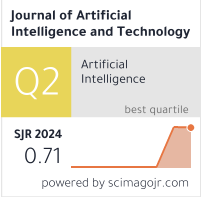Semiautomated Class Attendance Monitoring Using Smartphone Technology
DOI:
https://doi.org/10.37965/jait.2020.0040Keywords:
class attendance, face detection, face recognition, smartphoneAbstract
Class attendance is important. Class attendance recording is often done using ‘roll-call’ or signing attendance registers. These are time consuming, easy to cheat and it is difficult to draw any information from them. There are other, expensive alternatives to automate attendance recording with varying accuracy. This study experimented with a smart phone camera and different combinations of face detection and recognition algorithms to determine if it can be used to record attendance successfully, while keeping the solution cost-effective. The effect of different class sizes was also investigated. The research was done within a pragmatism philosophy, using a prototype in a field experiment. The algorithms that were used, are: Viola-Jones (HAAR features), Deep Neural Network (DNN) and Histogram of Oriented Gradients (HOG) for detection and Eigenfaces, Fisherfaces and Local Binary Pattern Histogram (LBPH) for recognition. The best combination was Viola-Jones combined with Fisherfaces, with a mean accuracy of 54% for a class of 10 students and 34.5% for a class of 22 students. The best all over performance on a single class photo was 70% (class size 10). As is, this prototype is not accurate enough to use, but with a few adjustments, it may become a cheap, easy-to-implement solution to the attendance recording problem.
Metrics
Published
How to Cite
Issue
Section
License
Copyright (c) 2021 Authors

This work is licensed under a Creative Commons Attribution 4.0 International License.





